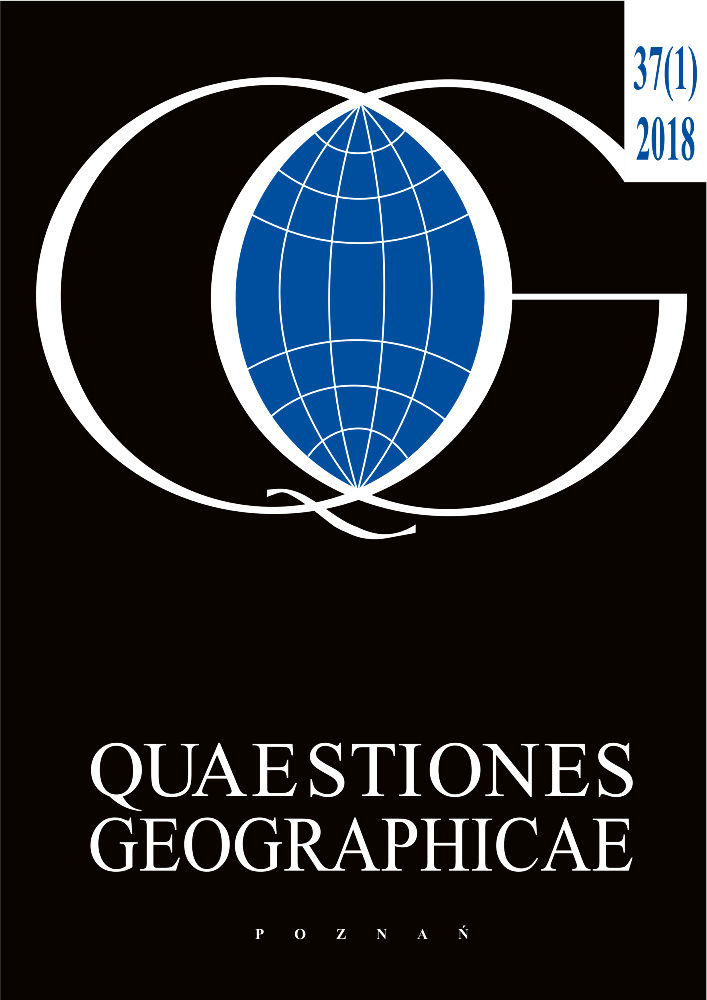Abstract
Applied research in geomorphology includes landform analysis and evaluation from a specific perspective of scientific significance and global relevance. In this paper, landform diversity of Seoraksan, Republic of Korea, a UNESCO World Heritage candidate, is compared with geomorphic characteristics of two World Heritage properties in China, Huangshan and Sanqingshan. Seoraksan represents an almost complete mountain geomorphic system of considerable contemporary dynamics, with outstanding scenery and spectacular landforms such as domes, fins, bedrock channels, waterfalls, and inherited block fields. It is argued that Seoraksan contains outstanding scientific and aesthetic values, not present at the Chinese properties, offering scope for successful nomination.References
Badman T., 2010. World Heritage and geomorphology. In: P. Migoń (ed.), Geomorphological Landscapes of the World. Springer, Dordrecht – Heidelberg – London – New york: 357–368.
Cui z., Chen Y., Yang X., 2009. Granite landform characteristics, distribution and evolution pattern in Huangshan mt. Chinese Science Bulletin. 54(23): 4487–4499. DOI 10.1007/s11434-009-0309-x.
Chen Y., Cui z., Yang J., 2009. Influence of climate and tec-tonic movements on granite landforms in China. Journal of Geographical Sciences 19: 587–599. DOI 10.1007/s11442-009-0587-x.
Dingwall P., Weighell T., Badman T., 2005. Geological World Heritage: A Global Framework. IUCN, Gland, Switzerland. Ford D.C., Williams P.W., 2007. Karst Hydrogeology and Geo-morphology. Wiley, Chichester.
Gerrard A.J., 1988. Rocks and Landforms. Unwin Hyman, London.
Helland P.E., Huang P.-H., Diffendal Jr. R.F., 1977. SEM analysis of quartz sand grain surface textures indicates alluvial/colluvial origin of Quaternary “glacial” boulder clays at Huangshan, East-China. Quaternary Research 48: 177–186.
Huang P.-H., Diffendal R.F., Yang M.-Q., Helland P.E., 1999. Mountain Evolution and Environmental Changes of Huangshan (yellow Mountain), China. The Journal of Chinese Geography 9(1): 25–34.
Huang P.-H., Diffendal R.F., Yang M.-Q., 2002. Structural and Geomorphological Evolution of Huangshan (yellow mountain), Anhui Province, China. Papers in Natural Resources 120. Online: digitalcommons.unl.edu/natrespapers/120 (accessed 17 July 2017).
Jennings J.N., 1984. Karst Geomorphology. Blackwell, Oxford. Jo W.-R., 2000. Geology and geomorphology. In: H.-J. Kwon, W.K. Huh (eds), Korea. The Land and People. Kyohaksa, Seoul: 29–52.
Kee W.-S., Kim H., Kim B.C., Choi S.-J., Park S.-I., Hwang S.K., 2010. Geological Report of the Seoraksan Sheet. Scale 1:50,000. Korea Institute of geoscience and mineral Resources.
Migoń P., 2006. Granite Landscapes of the World. Oxford University Press, Oxford.
Migoń P., 2007. Sanqinsghan – the hidden treasure of China. Geological Review (Beijing) 53(Supplement): 91–97.
Migoń P., 2012. Stories behind superlative scenery. World Heritage 63: 18–25.
Migoń P., 2018. Geoheritage and World Heritage Sites. In: Reynard E., Brilha J. (eds), Geoheritage: assessment, protection and management. Elsevier, Amsterdam: 237–249.
Park K., 2000. Morphology and genesis of block fields on the Seoraksan National Park in Kangwon Province, Korea. Journal of the Korean Geographical Society 35: 653–663.
Park K., 2003. Block fields of Seoraksan National Park: age and origin. Journal of the Korean Geographical Society 38: 922–934.
Sweeting M.M., 1972. Karst Landforms. macmillan, London. Twidale C.R., 1982. Granite Landforms. Elsevier, Amsterdam.
Twidale C.R., Vidal Romaní R., 2005. Landforms and Geology of Granite Terrains. Balkema, Leiden.
UNESCO, 2015. Operational Guidelines for the Implementation of the World Heritage Convention. UNESCO, Paris.
WHC [World Heritage Centre], 2017. World Heritage Convention. Online: whc.unesco.org (accessed 17 July 2017).
Wilhelmy H., 1958. Klimamorphologie der Massengesteine. Westermann, Braunschweig.
Yin G., Ma z., Liu X., Yang Y., Yang M., Long M., 2006. Study on „mount Sanqingshan-Type” granite geology and landscape. In: Proceedings of the First International Symposium on Geology and Geomorphology of Granite. Sanqing Mountain, China, 62–83 (English abstract).
Young R.W., Wray R.A.L., Young A.R.M., 2009. Sandstone Landforms. Cambridge University Press, Cambridge.
